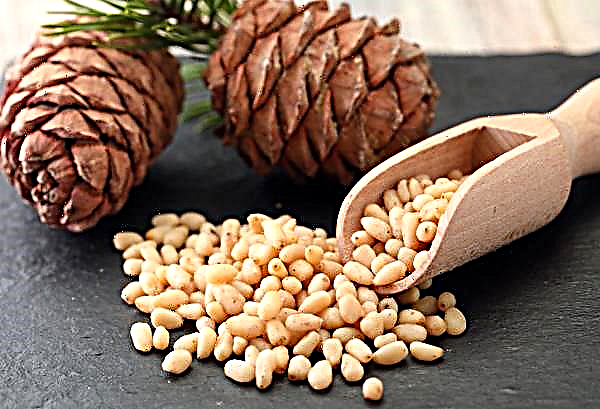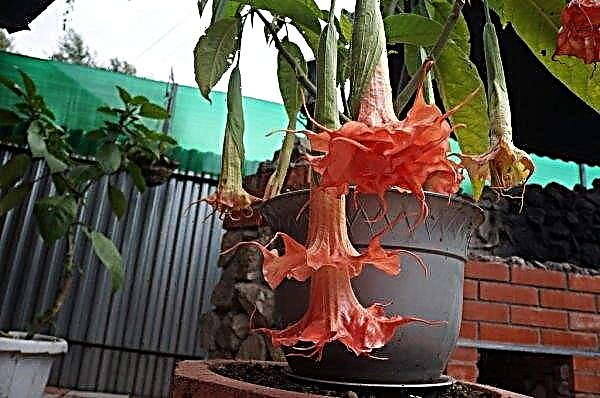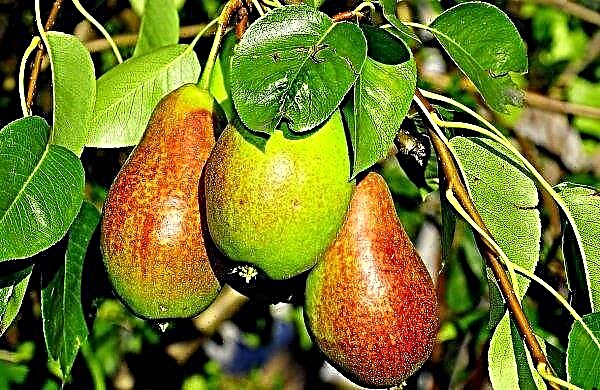Tulips delight with their bright colors and a variety of shapes, but they must be properly looked after. Diseases and insects can harm plants quite strongly, and therefore the main tasks for a gardener are effective preventive measures and timely methods for diagnosing and treating a flower. After reading the material, you will understand why it is so important to start the fight against diseases and pests in time.
Tulip diseases, their treatment and prevention
If you grow tulips, then there is a high probability of encountering viral or fungal diseases that, to varying degrees, spoil the decorative appearance of plants or even completely destroy flowers at different stages of their development.
Variegation
This is perhaps the most famous among the viral diseases that threaten your collection. It is interesting that for a long time the amazing motley pattern on the petals was taken as a varietal feature or the result of complex pollination. Only recently it became clear that aphids are transmitted by aphids, thrips, butterfly caterpillars and other insects that are well known to gardeners.
Wanting to get the juice of a brightly colored petal, pests disrupt the formation of pigment. Due to trauma, light streaks and spots of different shades appear. The fight against the disease is complicated by the fact that it manifests itself only in the second year, and in varieties with white and yellow petals, there is no sign of damage at all. It is also difficult to recognize variegation if the flower is dark or black in color. The plant itself does not die, but it is weakened and later blooms. Sometimes a characteristic, colorful pattern can be seen on the leaves.Important! There have been cases when the mottling virus is completely «killed» the original color of the tulip, and it became completely white or yellow.

The first thing to do is to get rid of insects by treating the plant and the ground with appropriate preparations. Later it makes sense to repeat the treatment using a solution of ammonia or an insecticide. Even if you, like many gardeners, like the unpredictable color, remember that without treatment, not only the main variety degenerates, but growing flowers can also lose their “classic” appearance.
Mosaic
This is a rather dangerous virus that parasitizes on plants. It multiplies through spores that affect the bulb. The mosaic virus initially destroys the leaves and stems of the tulip, stains them in brown stripes, which, over time, dry out and crack. Dark indentations appear on the root, the flower itself weakens after infection, is sick and can die.
 The most optimal way to combat the disease is to destroy the flower along with the bulb and a lump of earth. After this, weeds should be removed from the site and plowed to surely remove fungal spores.
The most optimal way to combat the disease is to destroy the flower along with the bulb and a lump of earth. After this, weeds should be removed from the site and plowed to surely remove fungal spores.
Gray rot
Fusarium
It can be manifested both by the fading of seedlings in the spring, and by the massive fall of the petals of already formed plants. Moreover, even instances of "large" varieties lag behind in development, and their flowers do not live up to expectations - dull, small, on short and thin peduncles. As in most cases, with fungal infections, rot begins to attack the plant from the roots and the bottom of the bulbs. Pay attention to “Fitosporin”, timely tillage of which will help to avoid losses.

Penicillus rot
Unlike other fungal, which tulips are so susceptible to, this type of rot is a direct consequence of a violation of the rules for storing planting material. There is a characteristic external manifestation - reddish-brown spots on the stems and leaves. If the disease has already manifested, then treat the injured bush and the ground near it with a 1% solution of Bordeaux mixture.
Remember that bulbs can be dug up strictly at certain times, not earlier, but they must be stored at a certain temperature regime. It is very important to avoid any mechanical injuries and burns with disinfectants.Did you know? Flower bulbs in the Netherlands sold very expensive in mid 17th century. Each of them was more expensive than the house of a person with an average income.

Rhizoctonia
Rhizoctonia develops when the growing rules are not followed, when the sprouts begin to rot, despite a well-developed root system. The danger is that with this disease around the bulb you can notice the mycelium, which “pulls” vital juices not only from tulips, but also from surrounding plants. To prevent the development of this disease, it will be enough to clean the storage tanks of planting material and periodically pickle the soil.
Tifulez
If the tulips do not sprout for a long time, and the leaves appearing very late, they do not turn around and instead begin to turn red, then your flowers are affected by typhulosis. This fungal disease spreads from the bottom of the bulb, which characteristically tumbles. Depending on the percentage of damage, the plants are either severely depressed and produce unopened buds, or die before the formation of the peduncle.
Be sure to dig over the infected area - deeply, with a full turn of the soil layer. Your task is to raise mushroom spores from the depths so that they die. For prevention purposes, it is not worth growing bulbs in the same place for more than 3-5 years. Strong plants are able to withstand infection, this is another reason to carry out reinforcing dressings and carefully consider the choice of planting material.
Visually, you can distinguish typhulosis from other diseases that lead to decay by a green dividing border between healthy and diseased tissue on the bulb. The earth and the affected bulbs are the location where the pathogenic fungus, the source of infection, successfully hibernates. Therefore, remove the diseased plant with an earthen lump, and be sure to treat the area with a Bordeaux mixture with a concentration of not more than 1%.Did you know? In 1623, Holland was covered by "tulip fever." This was due to the fact that one Viceroy bulb cost more than 1000 guilders and was in great demand.

Pests
In addition to diseases, tulips can be attacked by pests. Insects and other living creatures damage the flower, which leads to a deterioration in the general condition of the plant and even to death. To avoid this, it is necessary to monitor the appearance of the tulip, pay special attention to the preventive control of pests and respond quickly in case of damage by harmful organisms. To date, many different pests are known. The most common lesions of flowers are aphids, ticks and bears.
Did you know? Most varieties of tulips have a pronounced symmetry. Flowers are subject to three-beam symmetry: they have 3 external and internal perianth petals, 6 stamens and a three-lobed ovary.
Bears
The body of this insect has a dark brown color and can reach a length of 5 cm. Medvedka parasitizes in the warm season and appears in moist soil, which is well fertilized with humus. This parasite infects the roots, gnawing them and eats the shell of tulip bulbs. Bears have well-developed forelimbs, which are used to dig moves. Ways of movement of the insect are located at a depth of several centimeters from the surface. Below the bear, it deepens only for wintering and nest formation.

You can fight insects by regularly plowing the soil, treating the soil with zinc phosphide and trapping the pest mechanically using traps and killing eggs from the nest. On the site, you can lay out sheets of metal, slate or plywood, which the insect will use as a shelter. Soon you just need to throw out the bait along with the pests. Burrows recommend destroying by loosening areas where traces of these pests are visible.
Ticks
This insect is one of the most dangerous for tulips. It penetrates the bulb through the damaged area or gnaws at its surface, as a result of which the tulip stops growing, withers and dies. The tick has a bright, oval body about 1 mm long. It enters the soil through the soil and bulbs when planting.
The most effective way to control pests is to heat the affected bulbs. They should be immersed in hot water. After this, the bulbs must be dried and sprinkled with chalk, which will stick to the body of the pest and it will die. You can also treat the seed with chemicals such as Bazudin, Carbathion, etc. As a preventive measure, it is recommended not to overmoisten the soil of tulips, destroy weeds and store the bulbs properly.
Aphid
Greenhouse aphids can be particularly harmful to tulips. The insect has an oval body of green or pink color and can reach a length of about 2 mm. The insect settles in a bud, on a stalk or leaves, feeds on the juice of a tulip, thereby draining it.
Important! To protect tulips, beneficial insects are lured to the site. For example, a ladybug eats a huge amount of aphids per day.
When an aphid strikes a tulip, which is in the ground, it is treated with special chemicals. For example, you can use Primor or Sayfos. If the bulb was affected during storage, humidity should be adjusted and the bulbs treated with the indicated substances. In order to prevent the defeat of tulip aphids, one should plow the ground, get rid of weeds and damaged flowers.
 It can also affect the bulb during storage. As a result of the parasitic actions of aphids, the tulip stops growing, the bud cannot open or the bright color of the flower is lost. Aphids can be a carrier of various viral diseases.
It can also affect the bulb during storage. As a result of the parasitic actions of aphids, the tulip stops growing, the bud cannot open or the bright color of the flower is lost. Aphids can be a carrier of various viral diseases.
How to protect a tulip from pests
In order for the flowers on the flowerbed to please their flowering for a long time, it is necessary to constantly monitor their condition.
- Effective preventive measures in the fight against insects include periodic plowing of the soil, maintaining a normal level of soil moisture, harvesting weeds and damaged flowers. It is very important to have time to recognize signs of damage to the flower at the initial stage.
- Particular attention should be paid to the condition of the soil. It is recommended to periodically heal and fertilize.
- If you dig bulbs for storage, you should carefully inspect each one, select damaged ones, and healthy ones - put them in a well-ventilated room at a distance from each other. To protect the bulbs, they must be processed by immersing in heated water up to + 40 ° С.
- Protecting tulips in your area will help treat them with pesticides. However, the preparations should be used strictly according to the instructions so as not to harm the flowers.
 It is not difficult to take care of tulips, you just have to follow the rules of storage and planting in the ground, also monitor the condition of the flower during growth and flowering.
It is not difficult to take care of tulips, you just have to follow the rules of storage and planting in the ground, also monitor the condition of the flower during growth and flowering.
Tulips, like many bulb plants, are often exposed to various diseases and insect infestations. Now you know how to quickly recognize and effectively solve a problem. On the Internet, you can study photos of pests to understand how insects look that can destroy tulips.












